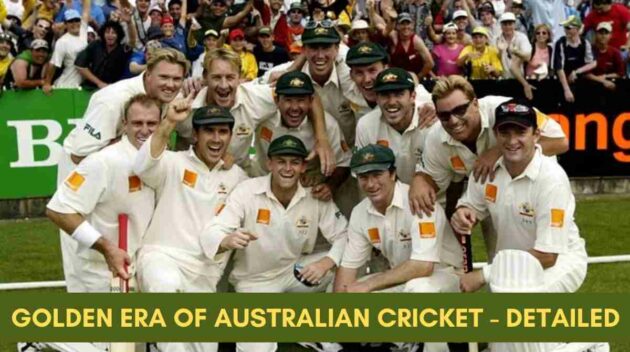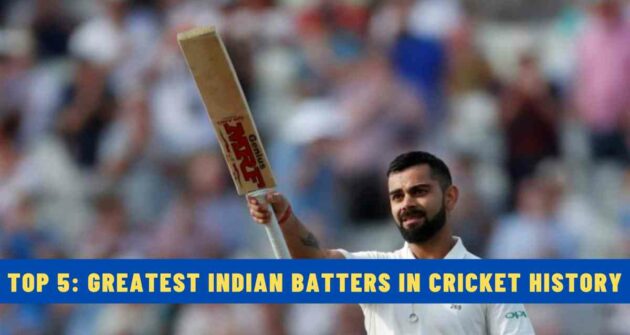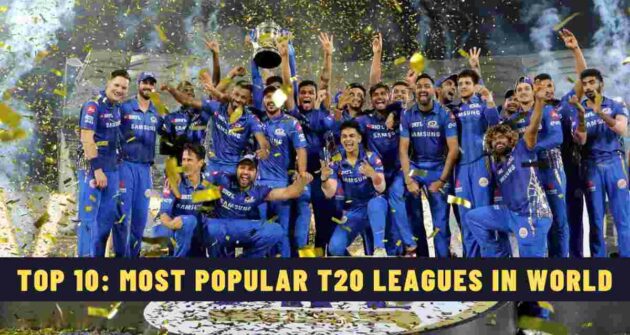Cricket, often dubbed as the ‘gentleman’s game,’ has seen its fair share of dominant teams throughout its illustrious history. Among them, the Australian cricket team of the 1990s to the mid-2000s stands out as one of the most formidable and successful sides ever to grace the sport. With an unparalleled blend of talent, skill, and determination, Australia’s cricketing prowess during this era reached unprecedented heights, earning them the title of the undisputed champions of the cricketing world.
The golden age of Australian cricket from the 1990s to the mid-2000s represents a pinnacle of sporting excellence that may never be replicated. Through their unmatched talent, relentless pursuit of success, and indomitable spirit, Australia’s cricketing heroes etched their names into the annals of sporting folklore, leaving an enduring legacy that transcends the boundaries of time and space. As cricketing enthusiasts, we can only marvel at the greatness of this extraordinary team and cherish the memories they created on the hallowed turf of cricket grounds around the world.
Table of Contents
Rise to Dominance
The journey to Australian cricket’s golden era can be traced back to the late 1980s when Allan Border took over the reins of a struggling team. Under Border’s leadership, Australia began its transformation from an underperforming outfit to a force to be reckoned with. This period saw the emergence of legendary players such as Allan Border himself, Steve Waugh, Mark Waugh, Shane Warne, and Glenn McGrath, among others, who would go on to define Australian cricket for years to come.
The Waugh brothers built on the platform laid by Border and passed the baton to Ricky Ponting further. Thus began one of the most dominant eras in World Cricket.
The Dominant Force:
The 1990s marked the beginning of Australia’s cricketing dominance, as they embarked on a relentless pursuit of success across all formats of the game. At the heart of this era were two iconic leaders: Steve Waugh and Ricky Ponting. Under their stewardship, the Australian cricket team soared to unprecedented heights, setting new standards of excellence and rewriting the record books with their extraordinary performances on the field.
Led by the astute leadership of Steve Waugh, the Australian team exuded confidence and a never-say-die attitude on the field. Their brand of aggressive and uncompromising cricket set them apart from their competitors and struck fear into the hearts of opponents worldwide.
In the longest format of the game, Australia’s dominance was particularly evident. They embarked on a record-breaking streak of consecutive Test match victories, firmly establishing themselves as the benchmark for excellence in Test cricket. Their unparalleled success on the field was fueled by a potent combination of batting prowess, with the likes of Ricky Ponting, Matthew Hayden, and Adam Gilchrist, and bowling mastery, spearheaded by the legendary Shane Warne and Glenn McGrath.
ODI World Cup Glory
It all began with the 1999 Cricket World Cup, held in England. Determined to reclaim the coveted trophy, Australia embarked on a journey of redemption under the astute leadership of Steve Waugh. Their campaign was nothing short of spectacular, culminating in a resounding victory in the final against Pakistan. This triumph not only signalled Australia’s return to cricketing glory but also laid the foundation for their era of dominance.
What followed was a period of unbridled success, highlighted by an incredible 25-match winning streak in One Day Internationals in the World Cup. With each victory, Australia asserted their supremacy over their rivals, showcasing a brand of cricket that was both ruthless and relentless. Led by inspirational figures like Waugh, Ponting, Glenn McGrath, Shane Warne, Adam Gilchrist, and Matthew Hayden, the team exuded confidence and class in equal measure.
The pinnacle of Australia’s dominance came in the form of consecutive Cricket World Cup triumphs in 2003 and 2007. In 2003, under the captaincy of Ricky Ponting, they successfully defended their title in a display of sheer dominance, culminating in a comprehensive victory over India in the final. Four years later, they repeated the feat, clinching their third consecutive World Cup by defeating Sri Lanka in the final, thereby solidifying their status as cricketing giants.
Moreover, Australia’s supremacy in ODIs was further underscored by their exceptional winning percentage, which remains unmatched among all cricketing nations. Out of 911 ODIs played, Australia emerged victorious in 556 matches while facing defeat in only 312 encounters, boasting an impressive winning percentage of 63.91%. This statistic serves as a testament to Australia’s sustained excellence and dominance in the limited-overs format.
Test Cricket Supremacy
Australia’s cricketing prowess reached its zenith during two remarkable periods when they clinched the record for the most consecutive Test match victories, each streak lasting 16 wins. The first streak, under the leadership of Steve Waugh, spanned from October 14, 1999, to February 27, 2001.
Nearly four years later, Ricky Ponting guided his team to another 16-match winning spree from December 26, 2005, to January 2, 2008. Notably, Ponting’s tenure as captain saw him lead the team in all 16 victories, while Waugh missed one match due to injury. These remarkable feats cemented Australia’s reputation as a cricketing powerhouse and left an indelible mark on the annals of the sport’s history.
The Australian team of the late 1990s and early 2000s, under the leadership of Steve Waugh and later Ricky Ponting, embarked on a period of unprecedented success. Between October 1999 and November 2007, they played 93 Tests and won a staggering 72 of them. What set this Australian side apart was their all-round excellence. While Glenn McGrath and Shane Warne formed a formidable bowling duo, the batting lineup boasted stalwarts like Ricky Ponting and Adam Gilchrist, who revolutionized the role of a wicketkeeper-batsman.
Cultural Impact
Beyond their on-field exploits, the Australian cricket team of the 1990s to the mid-2000s left an indelible mark on the sport’s culture. Their aggressive and uncompromising style of play redefined the way cricket was perceived and played, inspiring a generation of players to emulate their success. The team’s never-say-die attitude and commitment to excellence served as a blueprint for future generations of Australian cricketers, cementing their legacy as pioneers of modern cricketing ethos.
But beyond the trophies and accolades, what truly defined the Golden era of Australian Cricket was the team’s winning culture. It was a culture built on a relentless pursuit of excellence, a commitment to continuous improvement, and an unwavering belief in each other’s abilities. Whether it was their meticulous preparation, their steely resolve under pressure, or their never-say-die attitude on the field, Australia epitomized the ethos of champions in every sense of the word.
As all great chapters eventually come to a close, so too did the Golden era of Australian Cricket. But its legacy endures, serving as a source of inspiration for future generations of cricketers and a benchmark for excellence in the sport. In the annals of cricketing history, the era under Steve Waugh and Ricky Ponting will forever be remembered as a golden age, a time when Australia reigned supreme and cricket reached new heights of glory.
Legacy
As with all great sporting dynasties, Australia’s cricketing dominance eventually began to wane, with the retirement of key players signalling the end of an era. However, the legacy of the golden age of Australian cricket continues to endure, serving as a reminder of what can be achieved through talent, hard work, and unwavering determination. The exploits of the iconic players and teams from this era will forever be etched in the annals of cricketing history, serving as inspiration for generations to come.
Read Next | West Indies Cricket: A Tale of Glory and Decline











